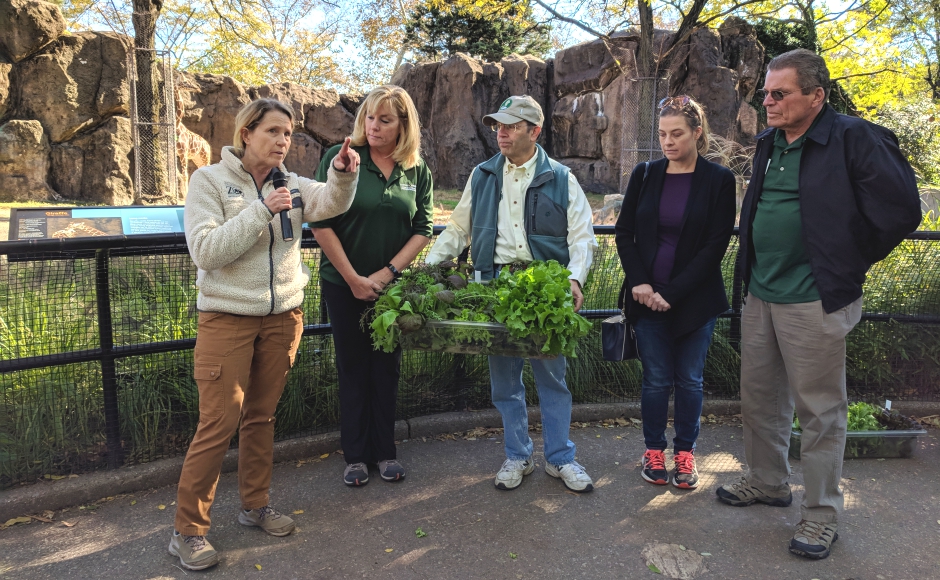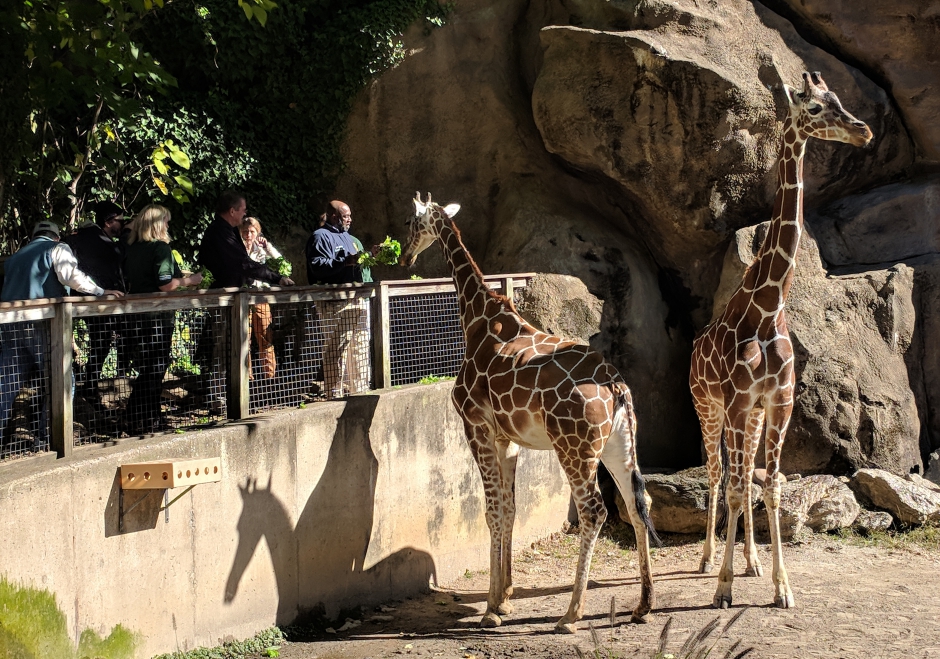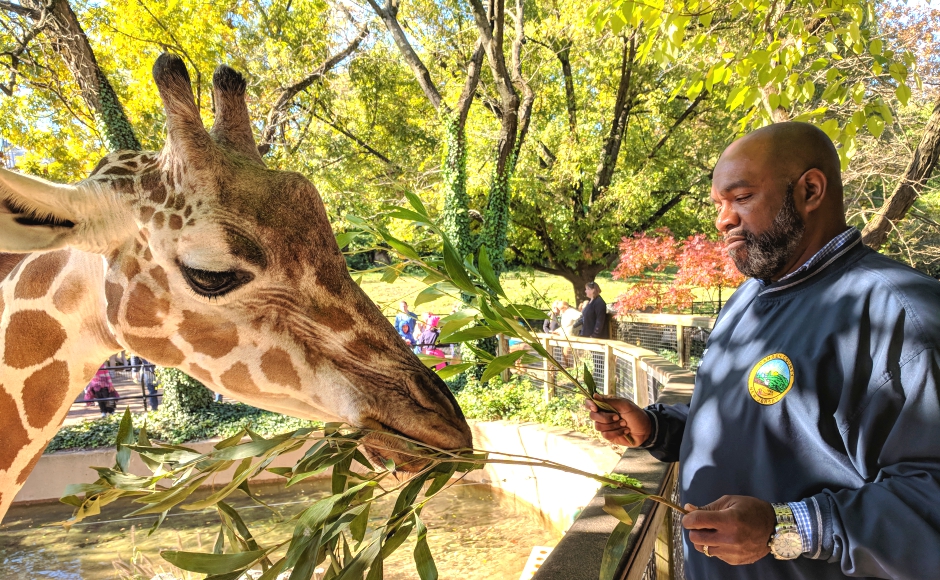The months-old partnership between the Camden County Office of Sustainability and Philadelphia Zoo already has yielded 150 pounds of locally sourced hydroponic greens for giraffes, apes, and tortoises.
By Matt Skoufalos | October 30, 2018

Philadelphia Zoo Director of Nutrition Barbara Toddes discusses the nutritional value of the leafy greens provided by the Camden County Office of Sustainability. Credit: Matt Skoufalos.
A new partnership between the Camden County Office of Sustainability and the Philadelphia Zoo has connected gardeners in South Jersey with farm-to-table customers of a different kind.
Since the summer, the county has shipped 150 pounds of food grown in its Lakeland hydroponic greenhouse to animals just a few miles away at the zoo.
The county program, which yields fresh, local greens year-round, represents an important extension of its green initiatives, said Camden County Freeholder Jonathan Young.
“We spend a lot of time trying to figure out how to take our sustainability model on the road,” Young said of the program, which also provides community education, and cultivates some 10,000 plants annually for county parks.
“This is the fruits of our labor,” he said.
The veggies—herbs, lettuce, and other leafy greens—are cultivated with support from the all-volunteer Master Gardeners of Camden County. Rebecca Szkotak of the Rutgers University New Jersey Agricultural Experiment Station said the initiative is one way to “get horticulture to the masses.”
The program is designed to offset its operating costs more than turn a profit, said county sustainability director Chris Waldron. Three-quarters of its food product is donated to Camden City soup kitchens and the county-run senior lunch programs; the remaining 25 percent is sent to the zoo.
Zoo educator Kristen Waldron said the arrangement works out because it aligns with the goals of both organizations.

Giraffes Abby (left) and Stella line up for feeding at the Philadelphia Zoo. Credit: Matt Skoufalos.
“We’re always looking for the opportunity to source locally,” she said, citing the freshness, high nutritional value, and absence of pesticides in hydroponic vegetables.
For some animals, like giraffes Stella (17), Abby (10), and baby Bo (4.5 months), the leafy greens provide an enrichment to their staple diets.
For others, like orangutans, gorillas, and tortoises, it can fulfill some of their regular needs.
Barbara Toddes, Director of Nutrition for the zoo, said the zoo “competes with the human market for this type of commodity,” and that the quality of the food grown through the sustainability program is great for the animals it feeds.
“Our mission is conservation,” Toddes said. “It’s not just animals, it’s habitat. The more we can utilize things that don’t contribute to factory farming, the better.”
And for an organization that spends up to half a million dollars on animal feed annually, buying lettuce at just 50 cents a head is as much a bargain as buying it fresh in the colder months.
“This is an important pilot for us to continue,” Kristen Waldron said. “With 1,300 animals to feed, it’s a pretty hefty grocery bill.”



